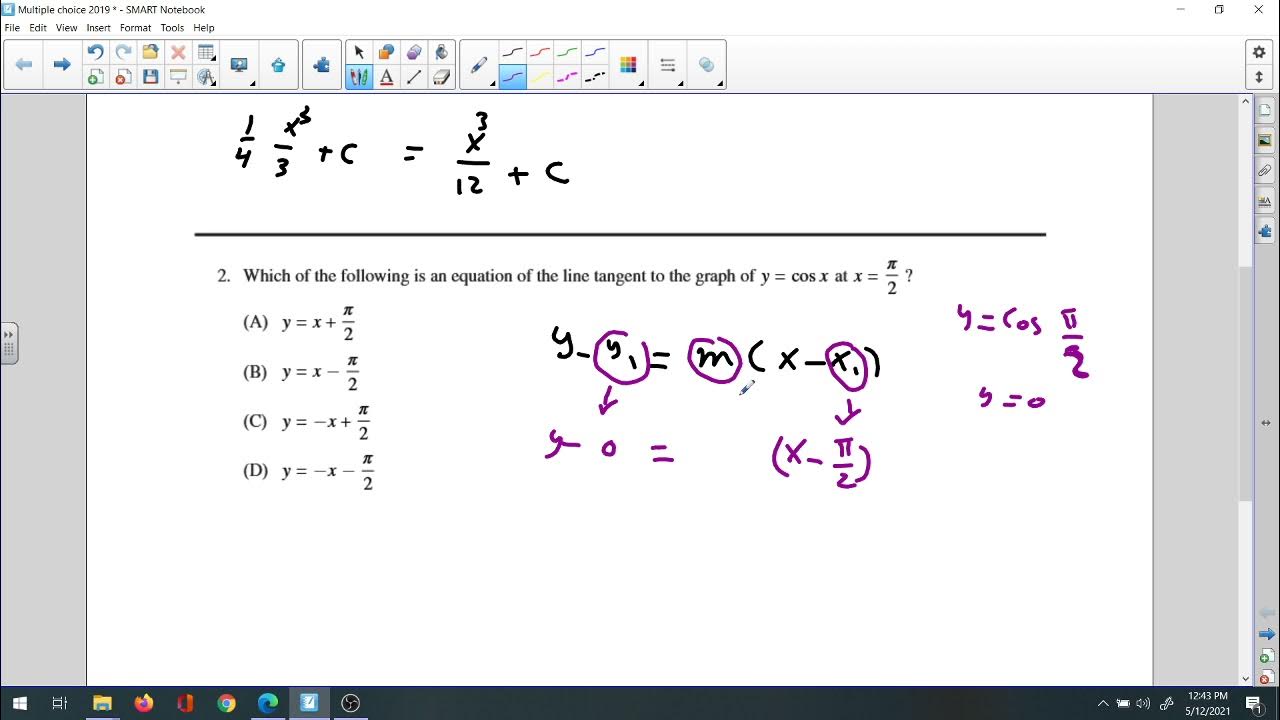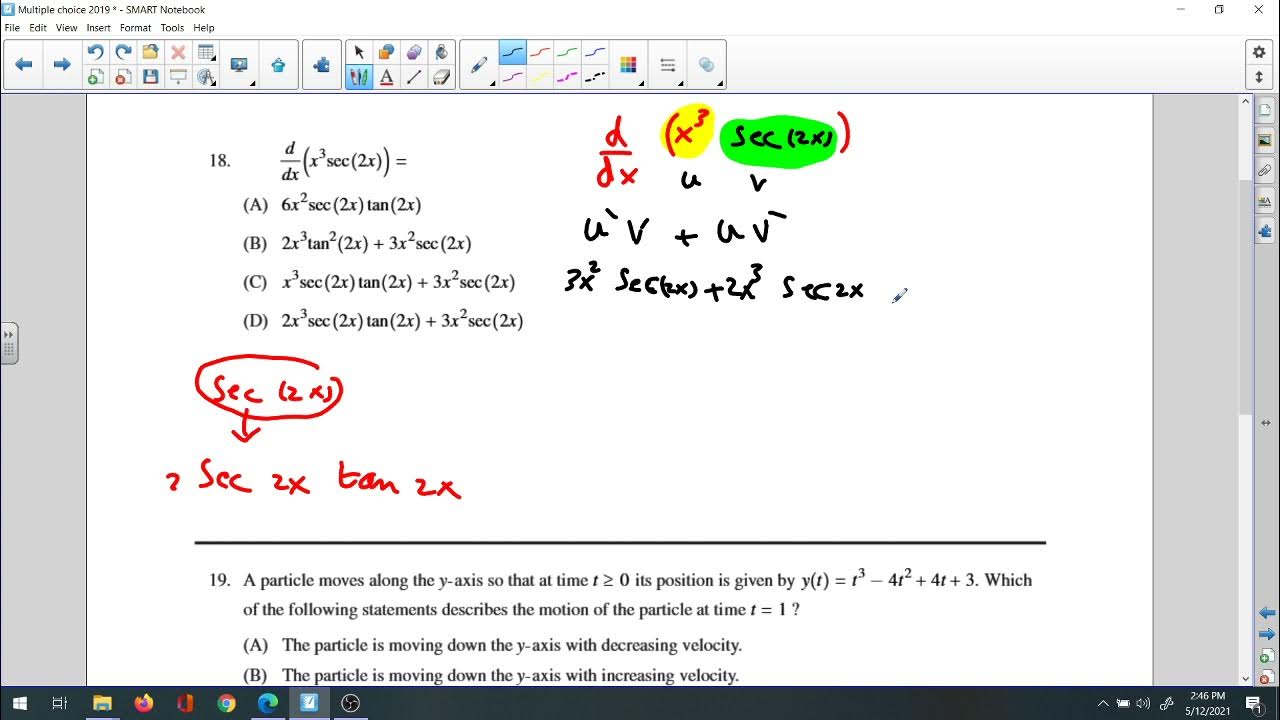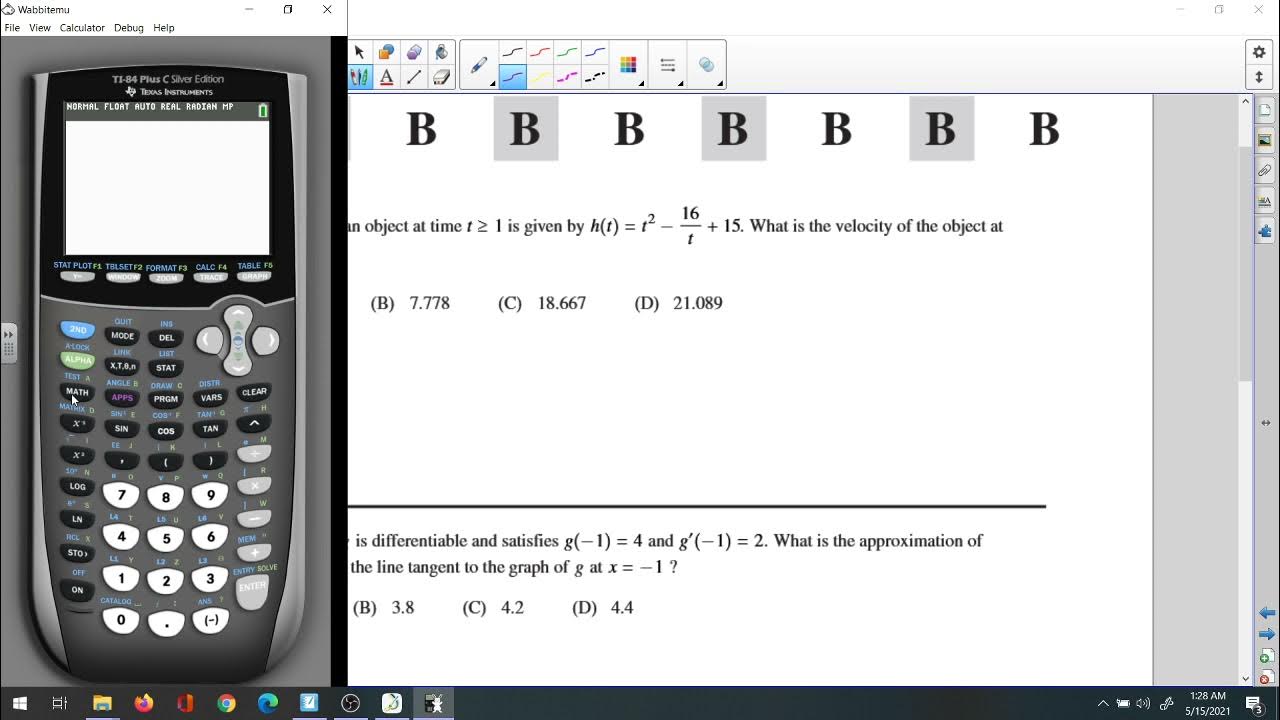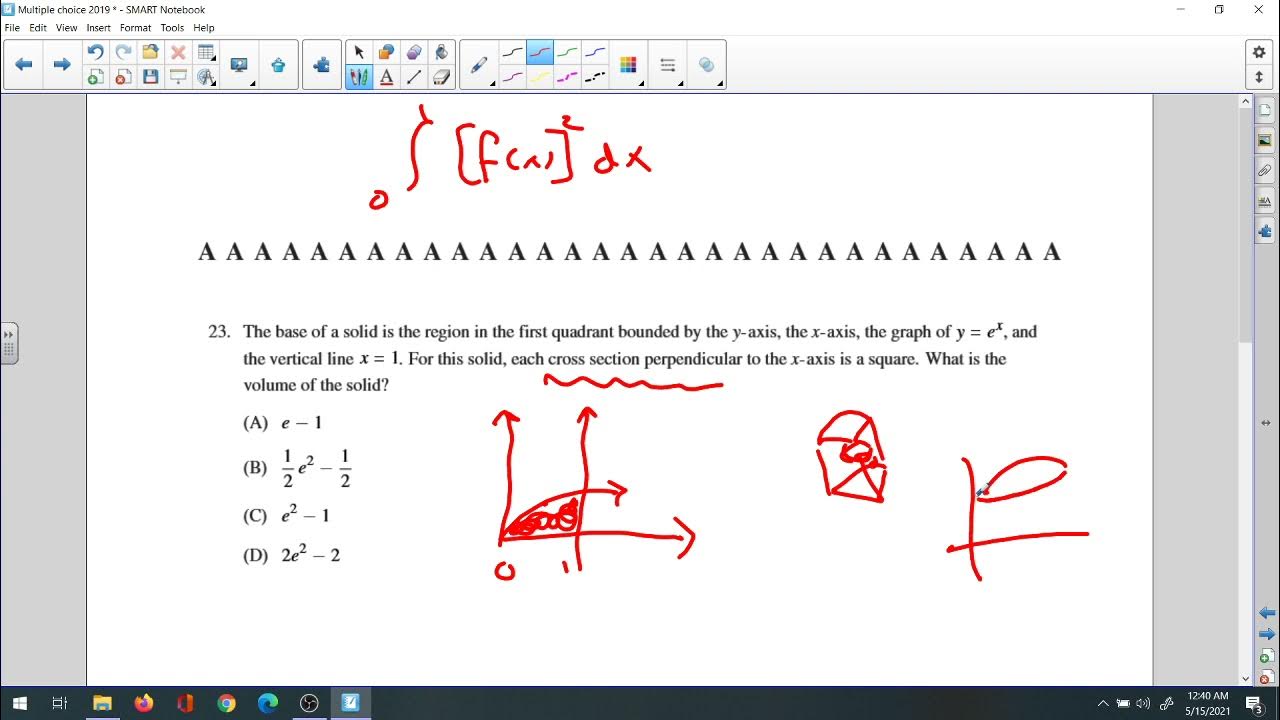2019 Multiple choices 10
TLDRThis video script offers an in-depth review of the 2019 AP Calculus Multiple Choice problems, providing a comprehensive analysis of the questions and strategies for tackling them. It is an essential resource for students preparing for the AP exam, highlighting key concepts and offering insights into problem-solving techniques. The summary aims to engage viewers by distilling the essence of the script, making complex calculus topics accessible and intriguing.
Takeaways
- 📘 Understand the fundamental theorem of calculus and its applications.
- 🧮 Master techniques for differentiation, including the chain rule, product rule, and quotient rule.
- 📈 Practice interpreting and sketching graphs of functions, especially with respect to limits and continuity.
- 🔢 Get comfortable with various integration techniques, such as substitution and integration by parts.
- 📊 Analyze and solve problems involving rates of change in the context of real-world applications.
- ✏️ Review the concepts of sequences and series, focusing on convergence tests.
- 📝 Be proficient in solving optimization problems using calculus principles.
- 📐 Ensure understanding of parametric, polar, and vector functions.
- 🧑🏫 Study and practice problems on the application of derivatives to understand motion, including velocity and acceleration.
- 📚 Familiarize yourself with past AP Calculus multiple-choice questions to identify common themes and problem types.
Q & A
What is the structure of the 2019 AP Calculus exam?
-The 2019 AP Calculus exam consists of two sections: a multiple-choice section and a free-response section. The multiple-choice section has 45 questions to be completed in 105 minutes, divided into two parts: one allowing the use of a calculator and one not.
What strategy is recommended for approaching the multiple-choice questions?
-A recommended strategy is to first quickly go through all the questions, answering the ones you find easiest, and marking the more challenging ones for review. This ensures that you maximize your score by securing all the points you can confidently achieve first.
How can you identify and avoid common pitfalls in calculus problems?
-Common pitfalls include misreading the problem, making algebraic errors, and incorrectly applying calculus principles. To avoid these, carefully read each problem, double-check your calculations, and review fundamental calculus concepts regularly.
What is a good approach to solving limits problems on the exam?
-For limits problems, first try direct substitution. If that doesn’t work, consider factoring, rationalizing, or using L'Hopital's Rule. Always check for continuity and the behavior of the function as it approaches the limit.
How should you handle problems involving derivatives?
-For derivative problems, start by clearly identifying the function and applying the appropriate differentiation rules (product rule, quotient rule, chain rule). Simplify your result and interpret it within the context of the problem.
What techniques are useful for solving integration problems?
-Useful techniques for integration problems include substitution, integration by parts, and recognizing common integral forms. Practice different techniques to become proficient in identifying the best approach for each problem.
Why is time management crucial during the AP Calculus exam?
-Time management is crucial because it ensures you have enough time to address all questions, review your answers, and make necessary corrections. Proper time management can significantly improve your overall score.
What tips can help improve accuracy on the multiple-choice section?
-To improve accuracy, read each question carefully, avoid rushing, eliminate obviously incorrect answers, and double-check your calculations. Additionally, practice with past exams to become familiar with the question format.
How should you prepare for the calculator-allowed section of the exam?
-For the calculator-allowed section, ensure your calculator is functioning properly and that you are familiar with its features. Practice solving problems that specifically require a calculator to build your proficiency.
What are some effective study strategies for the AP Calculus exam?
-Effective study strategies include practicing with past exam questions, focusing on areas where you struggle, reviewing fundamental concepts, and seeking help from teachers or study groups. Regular, consistent practice is key to success.
Outlines
📚 Review of 2019 AP Calculus Multiple Choice Questions
This paragraph introduces the topic of reviewing multiple choice questions from the 2019 AP Calculus exam. It sets the stage for a detailed analysis and discussion of the problems, possibly including strategies for tackling similar questions in the future.
Mindmap
Keywords
💡AP Calculus
💡Multiple Choice
💡Limits
💡Derivatives
💡Integrals
💡Infinite Series
💡Function
💡Continuity
💡Differentiation
💡Optimization
💡Volume
💡Rate of Change
Highlights
Differentiation techniques and their applications
Integration strategies, including substitution and by parts
Fundamental Theorem of Calculus and its practical uses
Limits and continuity problems with step-by-step solutions
Series convergence tests and their applications
Applications of derivatives, including optimization and motion problems
Implicit differentiation and related rates problems
Volume calculations using the disk and washer methods
Understanding and solving problems involving parametric equations
Techniques for solving differential equations
Polar coordinates and their applications in calculus
Multivariable functions and partial derivatives
Application of calculus in real-world contexts
Strategies for multiple-choice problem-solving in AP Calculus
Review of common mistakes and pitfalls in calculus problems
Transcripts
5.0 / 5 (0 votes)
Thanks for rating:





